NASA Centers to Visit for an Out of This World Vacation
NASA Centers to Visit for an Out of This World Vacation
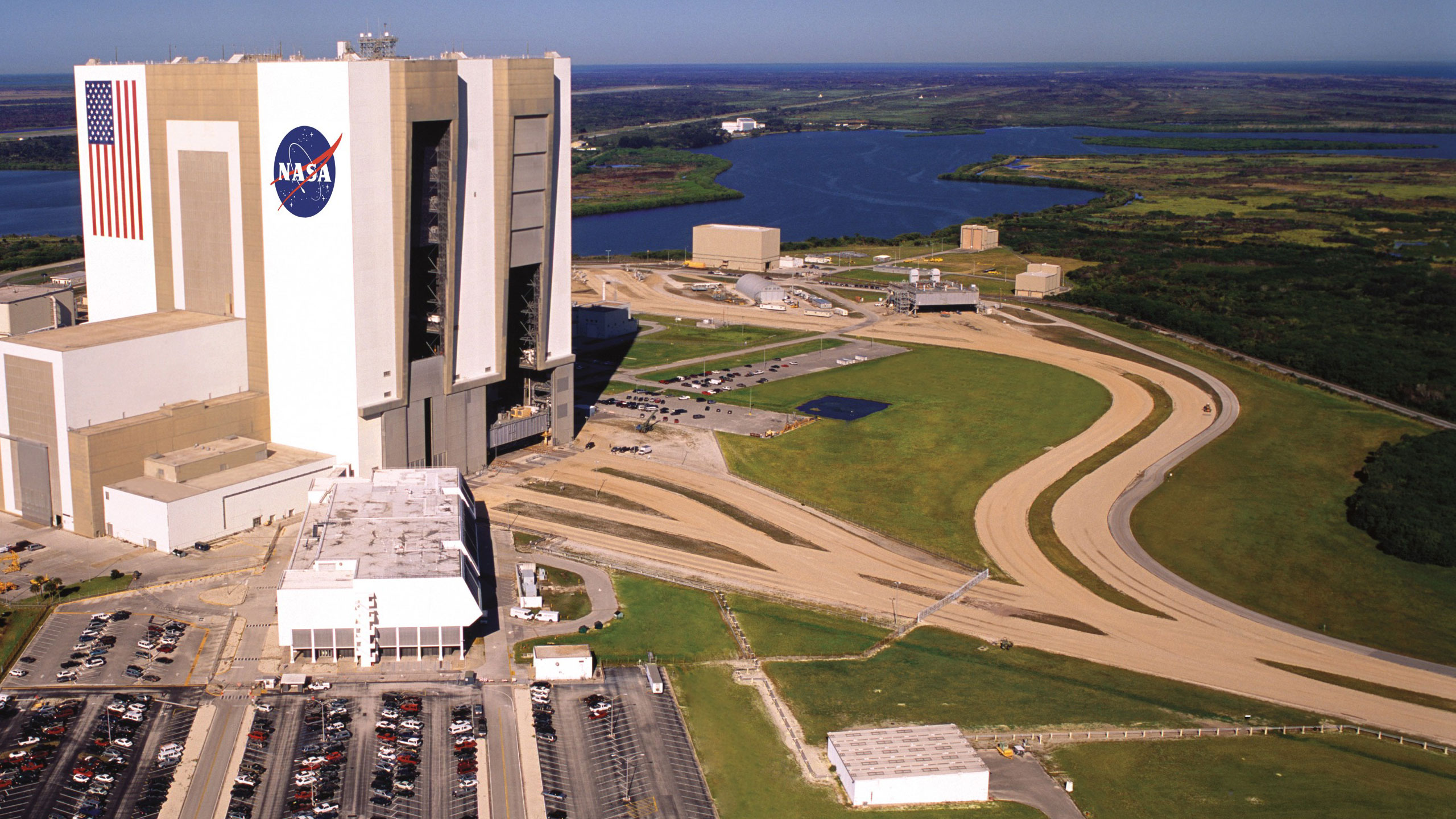
Wondering what to do for summer vacation? Why not visit NASA?
NASA has multiple centers located across the United States, many of which provide tours or host visitor centers that are open to the public. Most of these visitor centers have space-injected science museums, and they can make fantastic vacation stops.
Click through this countdown to learn about opportunities to visit a NASA center or visitor center. Our list includes details about visiting Johnson Space Center, Kennedy Space Center, Marshall Space Flight Center, Langley Research Center, Stennis Space Center, the Jet Propulsion Laboratory, Goddard Space Flight Center, Wallops Flight Facility, Glenn Research Center (and Plum Brook Station), Ames Research Center and Armstrong Flight Research Center. We've also included three facilities that serve as NASA visitor centers but that are not close to NASA facilities.
We've included a brief description of each NASA center, and details about what visitors can expect, including what you can see at the visitor center, and whether or not tours of the facility are available.
We've included details about each center's operational hours and cost of admission, but please check the center's website before planning your trip. Most NASA centers are closed on major holidays.
For more summer vacation ideas, see our list of great summer vacation ideas for space lovers and great summer vacation ideas for science fiction fans. Or find out how to see a rocket launch this summer.
NEXT: Johnson Space Center and Space Center Houston
Johnson Space Center and Space Center Houston
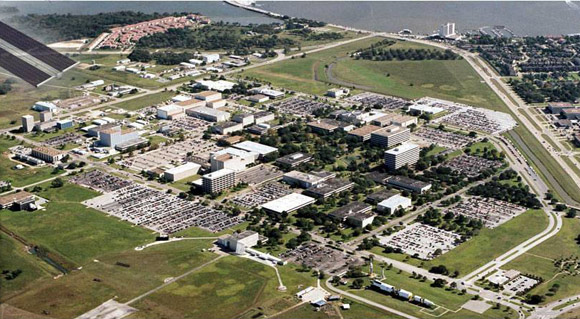
NASA's Johnson Space Center in Houston is home to mission control, the contact point for astronauts in space. (Hence the phrase, "Houston, we have a problem.")
Space Center Houston is the visitor center associated with Johnson, and is located right next door to the NASA facility. It's a massive science museum with tons of artifacts, interactive exhibits and live events. In June 2018, the science and space exploration learning center also became the first of its kind to be designated as a Certified Autism Center by the International Board of Credentialing and Continuing Education Standards, according to their website. The museum recently opened a new exhibit about aerospace innovations, called "Above and Beyond," which runs this summer until Sept. 9.
Space Center Houston is a great day-trip location for space fans, but there's enough going on there to fill multiple trips. [Space Center Houston: A Tour in Photos]
In addition, there are tram tours from the center through Johnson. Visitors get to see the current mission-control room, which is responsible for operations on the International Space Station. They'll also see the historic mission-control room, where NASA monitored its Apollo missions, as well as nine Gemini missions. Also on the tour are the Saturn V Rocket Park, home to a real "mighty and massive" Saturn V rocket, as the tour web page notes. Finally, the tour stops at Building 9, which provides a glimpse into some of the science and tech being developed for human spaceflight.
Tram tours run year-round but can be canceled due to bad weather or other unforeseen circumstances. You can buy timed tickets ahead of time. The Space Center Houston is open seven days a week, from 9 a.m. to 6 p.m. all summer long, and closes at 5 p.m. Monday through Friday after Sept. 4. Entry tickets are $29.95 for adults, and $24.95 for children ages 4-11. Children ages 3 and under are free.
NEXT: Kennedy Space Center
Kennedy Space Center and Visitor Complex

Kennedy Space Center (KSC) in Titusville, Florida (just outside Orlando), is NASA's human spaceflight launch facility. From Gemini through the space shuttle, Kennedy was the place where all of NASA's astronauts would bid a (temporary) farewell to Earth.
To take a tour of KSC, head over to the Kennedy Space Center Visitor Complex, a massive, amusement-park-like area.
There are two types of tours. The KSC Bus Tour gives a "drive-by view of a launch pad" and other sites on the KSC campus, including the Apollo 8 launch site. The tours are 45 minutes long, but allow an additional 2 hours to view the Apollo/Saturn V Center and to allow for the return ride, which lasts about 20 minutes, according to their website. Tours leave from the visitor center every 15 minutes, from 10 a.m. to 3:45 p.m. The tour is included in the cost of admission to the center, which is $50 for adults, and $40 for children ages 3-11. [Photos: The Kennedy Space Center, NASA's Historic Spaceport]
But visitors who want a closer view of KSC should consider the "Explore Tour or the Cape Canaveral Early Space Tour. These tours go beyond the regular bus tour and allow guests to learn about specific aspects of KSC. Keep in mind that rocket launches are once again taking place from Launch Complex 39A, and therefore, "safety protocols require an alternate tour bus route during days leading up to a launch," according to the website. To learn more about each tour, go to the ticket section of the KSC website, and scroll down to see a description of each tour. The "Cape Canaveral Early Space Tour" is only available Thursday through Sunday. To find out if a tour is available on a particular day, select the number of tickets you'd like for the tour, and click "Next." You'll be taken to a page that will show you the dates and times that are available for the tour.
The KSC Bus Tour is the only one included in the admission ticket; the other tours cost an additional $25 for adults and $19 for children ages 3-11. KSC recommends buying tickets ahead of time.
In addition to the KSC tour, the visitor center has plenty to offer. The Rocket Garden is home to multiple NASA rockets, some of which tower more than 100 feet high. There are also replicas of the tiny capsules that flew the first humans to space during the Mercury, Gemini and Apollo eras. There's also the Saturn V rocket center, a tribute to the largest rocket ever made. Kennedy is also home to the space shuttle Atlantis, and we challenge space fans not to get a little teary-eyed during the video that plays at the entrance of the shuttle exhibit.
NEXT: Jet Propulsion Laboratory and Caltech
Jet Propulsion Laboratory and Caltech
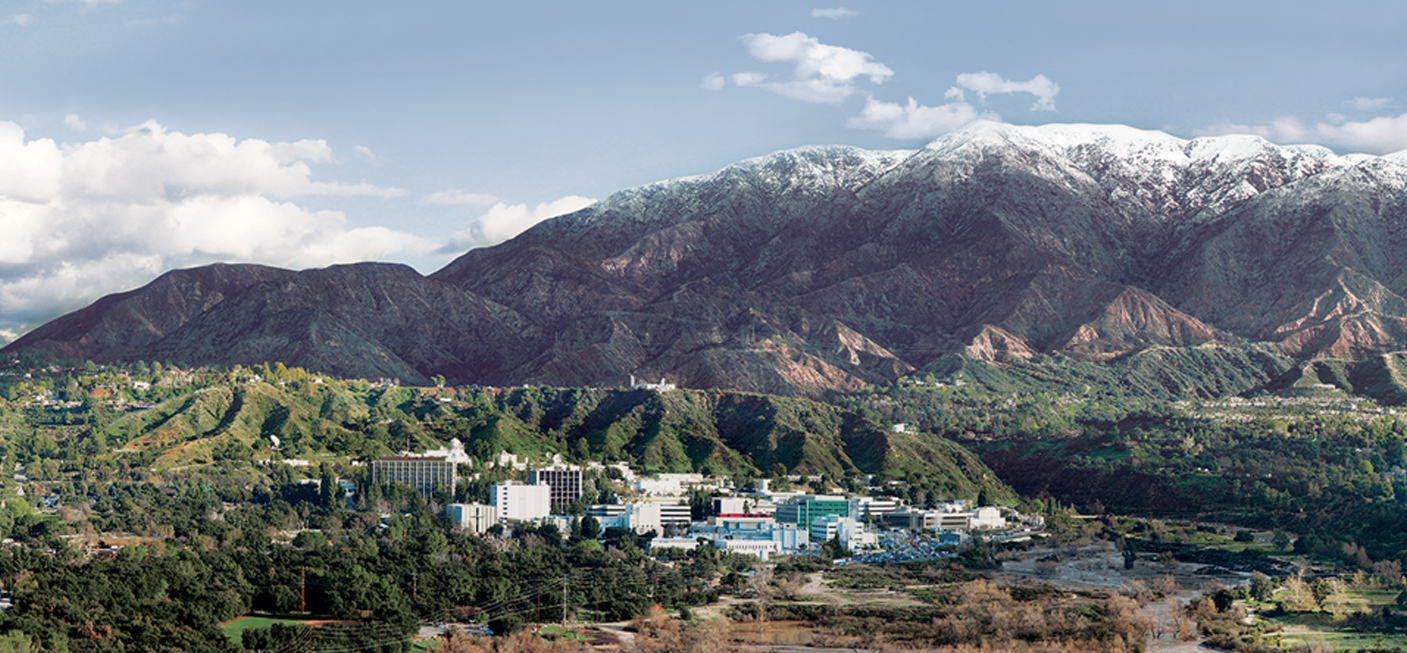
NASA's Jet Propulsion Laboratory in Pasadena, California, is one of NASAs most active facilities when it comes to building and operating unmanned space probes. It's the home base of a swarm of NASA's scientific missions, including the completed Cassini mission to Saturn, the Dawn mission to Ceres, the Juno mission to Jupiter, the InSight mission to Mars and the OCO-2 mission studying Earth's climate change.
JPL offers free tours of its facilities to members of the public, which includes a stop by the visitor center, home to a beautiful display tracing the history of NASA's exploration of the various planets, moons and other major bodies in the solar system. Visitors may also see the Space Flight Operations Facility and the Spacecraft Assembly Facility.
Keep in mind that tours must be reserved at least three weeks in advance, and that tours fill up two to three months in advance. The JPL tour website advises guests to check back in early August for tour availability in January 2019. Tours can be booked for individuals and small groups, large groups over 20 people, and school groups. Tours are generally held at 1 p.m. and last between 2 and 2.5 hours. JPL also opens its doors to the public for special events.
You might also consider stopping in on one of JPL's free lecture series, which bring "the excitement of the space program's missions, instruments and other technologies" to JPL employees and the public. These free lectures are open to the public and no reservations are required, but seating is limited, so arrive early. Each talk is delivered twice — once on Thursday night and once on Friday night, typically at 7 p.m. The talks take place at different locations, so be sure to check the website.
Visitors can also stop by the California Institute of Technology (Caltech), which founded JPL. The two institutions work closely together on NASA missions, and Caltech is home to five NASA facilities, including those that manage the Spitzer Space Telescope and the Nuclear Spectroscopic Telescope Array (NuSTAR).
Check the Caltech tours page for information about self-guided campus tours, as well as architectural tours, and high school student and prospective student tours. The school also hosts public events. Check the public events calendar to find out about other events.
JPL is about an hour outside Los Angeles, which is home to the California Science Center, a massive science museum with lots of hands-on exhibits and space-related attractions, including the space shuttle Endeavour. To find out more about seeing a space shuttle this summer, check out our list of best summer vacation destinations for space fans.
JPL is also three hours away from Vandenberg Air Force Base, where you can see a rocket launch this summer.
NEXT: Langley Research Center and the Virginia Air and Space Center
Langley Research Center and the Virginia Air and Space Center
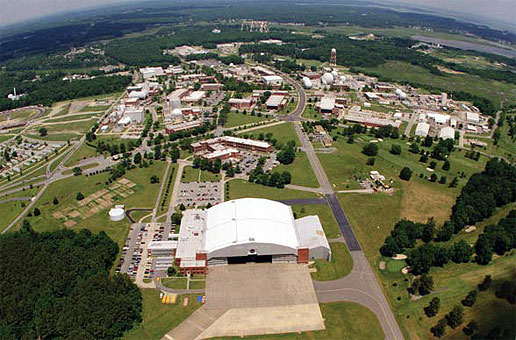
The Langley Research Center in Hampton, Virginia, was the first civilian spaceflight laboratory in the U.S. The lab played a crucial role in the Mercury and space shuttle programs.
The Virginia Air and Space Center serves as Langley's visitor center, and this interactive museum puts an emphasis on flight. In addition to NASA artifacts, there are multiple aircraft on display. There are lots of NASA-related exhibits, including a solarium that surrounds visitors in images taken by NASA's Solar Dynamics Observatory. There's also "Engineer it! an Imagination Playground" that "allows families to have fun creating and learning together."
The center is open Monday through Saturday from 10 a.m. to 5 p.m., and Sunday from 12 to 5 p.m. Tickets are $19.50 for adults, and $16.00 for children ages 3-18. Admission includes an IMAX movie.
Unfortunately, there are no regular public tours of the Langley facility. Occasionally, NASA will open the facility for special events, but none are planned for 2018, according to Langley representatives.
NEXT: Stennis Space Center and Infinity Science Center
Stennis Space Center and the Infinity Science Center
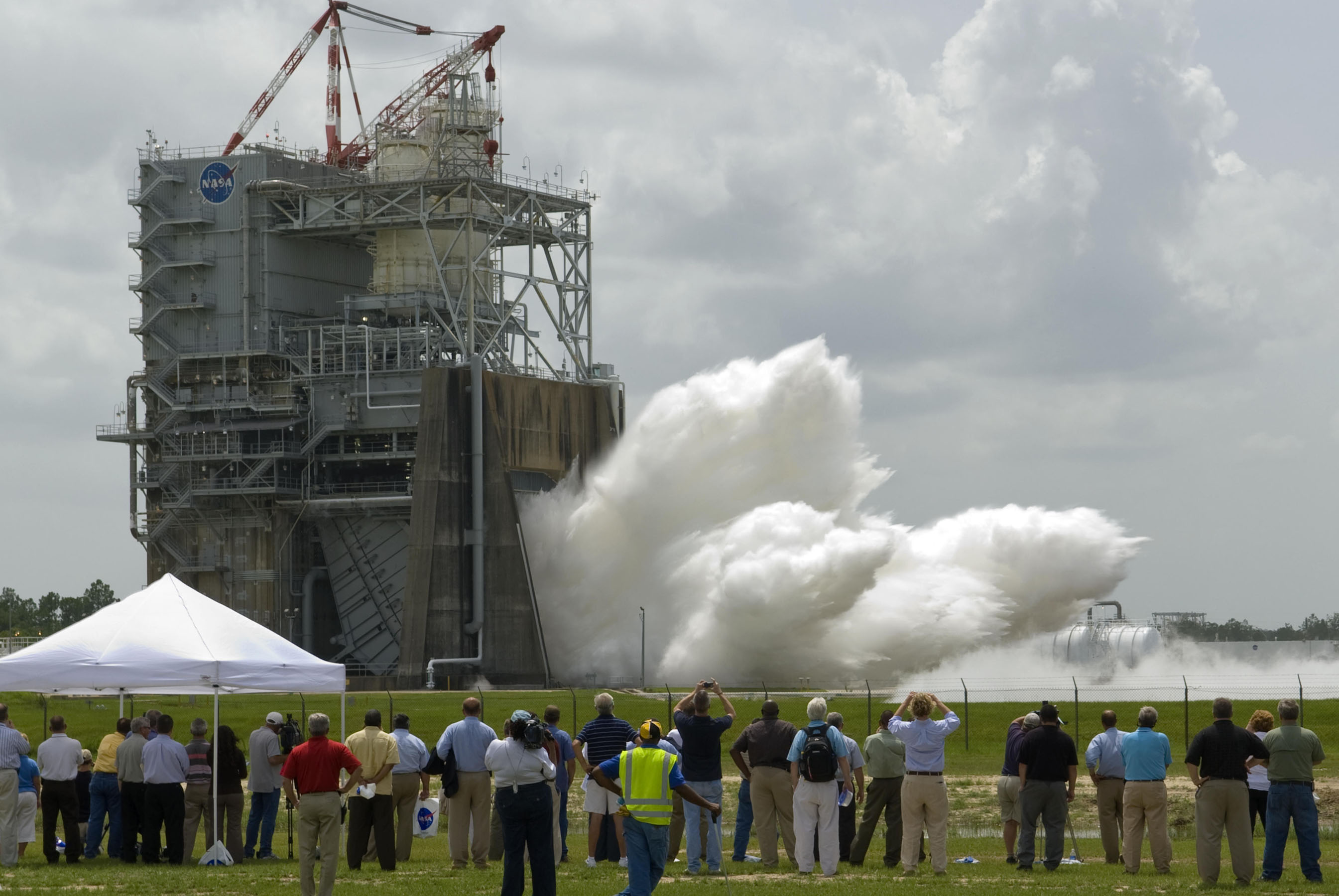
The John C. Stennis Space Center is in Hancock County, Mississippi, near the state border with Louisiana. Upon its construction in the 1960s, "the center's primary mission was to flight-certify all first and second stages of the Saturn V rocket for the Apollo program," according to NASA. In 1975, the space shuttle main engine was tested at Stennis, and testing on shuttle engines continued there until 2009. Stennis is now a "multidisciplinary facility comprised of NASA and more than 40 other resident agencies."
To see the Stennis Space Center, you'll first go to the Infinity Science Center in Pearlington, Mississippi, where every admission ticket includes a "behind-the-scenes tour" of Stennis.
Forty-minute bus tours of the Stennis Space Center happen Monday through Saturday at 11 a.m., noon, 1 p.m., 2 p.m. and 3 p.m. Tours fill up on a first-come first-served basis.
The Infinity Science Center is an interactive science center that features exhibits and attractions from which visitors can learn about spaceflight, aviation, ocean exploration and more. Check the center's website to learn about special events and programs.
In addition to the indoor attractions, visitors can stroll down Possum Walk Trail. From the center's website: "Markers along the way present the history of Possum Walk, a now deserted African-American community, as well as Logtown, an old logging community relocated in the wake of the 1960's Space Program. Interpretive signs along the trail point out some of the plants and animals native to this part of Hancock County." The trail is closed between Oct. 15 and Feb. 15. During the rest of the year, the trams run Tuesday through Saturday at 10 p.m., 11 p.m., 1 p.m. and 2 p.m.
The Infinity Science Center is open Monday through Saturday from 9 a.m. to 5 p.m. Admission is $18 for adults, and $11 for children ages 4 to 13, and includes a bus tour of Stennis. The Possum Walk Tram is an additional $3.
NEXT: Marshall Space Flight Center and the US Space and Rocket Center
Marshall Space Flight Center and the US Space and Rocket Center
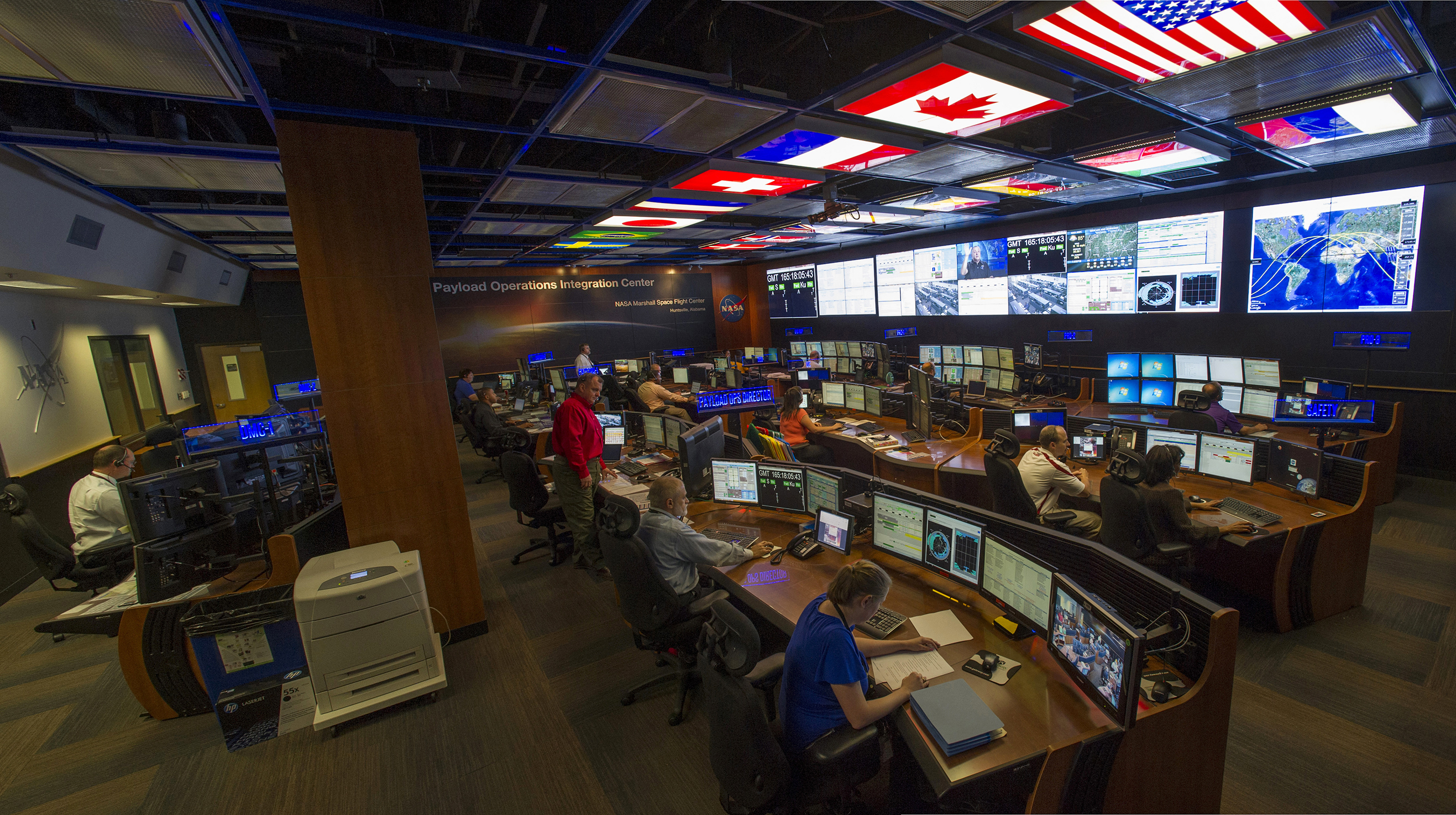
NASA's Marshall Space Flight Center in Huntsville, Alabama, has a spaceflight history that precedes the formation of NASA. Early rocket pioneer Wernher von Braun and a group of German scientists worked at the Redstone Arsenal in Huntsville in the 1950s, before the agency's formation. The work contributed to the first launch of a U.S. satellite into space, and since then, Marshall has performed a variety of functions for NASA's human spaceflight program. The facility has tested rocket hardware, as well as scientific hardware and instruments.
Marshall's official visitor center is the U.S. Space and Rocket Center, home to Space Camp. (For more information about attending Space Camp, check out our recommendations for the best summer vacations for space lovers.)
The Rocket Center "has one of the largest collections of rockets and space memorabilia anywhere in the world," according to the center's website. That includes a display of a Saturn V rocket and the world's only fully stacked Space Transportation System (a space shuttle stacked on top of a rocket in the configuration that would be assembled for a real launch). Check the website for information about featured exhibits.
The Rocket Center offers bus tours of the Marshall Space Flight Center that includes multiple stops in the facility. Tickets for the tour are $20 for visitors ages 5 and up. Tour buses depart the Rocket Center daily at 12:30 p.m. The tour takes between 2 and 2.5 hours.
Admission to the Space and Rocket center is open seven days a week, from 9 a.m. to 5 p.m. Tickets are $25 for adults, and $17 for kids ages 5-12. Tickets to the center's IMAX or National Geographic movies are an additional $5 with the price of admission; without admission, the movies are $8 for adults and $7 for kids.
NEXT: Wallops Flight Facility and Visitor Center
Wallops Flight Facility and Visitor Center
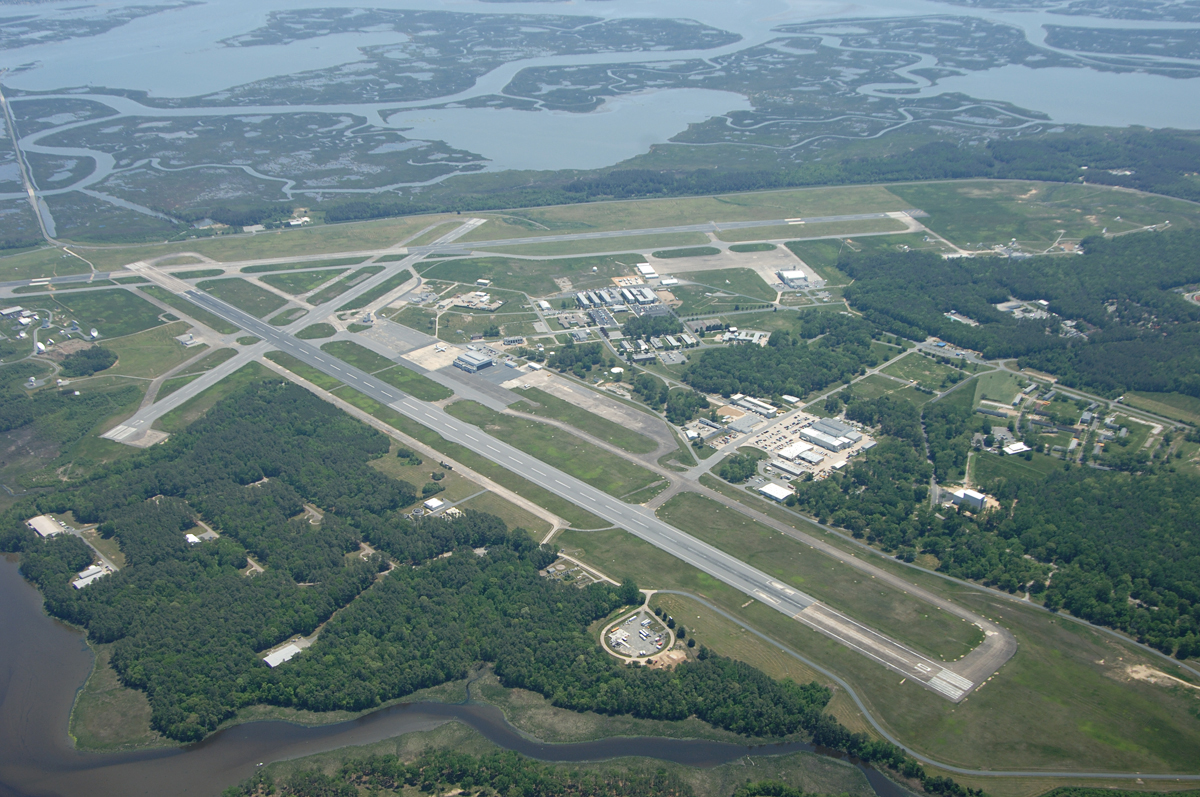
NASA's Wallops Flight Facility on Wallops Island, Virginia, is one of three large rocket launch locations in the contiguous U.S. In addition, Wallops is "NASA's principal facility for management and implementation of suborbital research programs," according to NASAs website.
The Wallops Flight Facility Visitor Center "features exhibits about aeronautics, orbital and sub-orbital rockets, scientific balloons, current missions and the history of Wallops Flight Facility," and much more, according to the center's website. There are also lots of special events throughout the summer, including astronomy nights and a lecture series. Check the center's events website for specific dates, event descriptions and other details.
But perhaps the best reason to stop by the visitor center is to see a rocket launch. The center opens an hour before a launch takes place, even if the launch is taking place outside normal visitor center hours (this is subject to change for national security reasons). Sound from the control room is piped into the center, so guests can hear the preparations for launch, and the countdown. And, the center is nicely positioned to give a clear view of the launch pad. For large rocket launches (such as an Orbital ATK Antares rocket, which is used to send supplies to the International Space Station, among other things), it is recommended that guests arrive about 3 hours before launch to get a good spot. For smaller rocket launches (like sounding rockets), 1 hour is usually sufficient. Check out our guide to seeing a launch for more details, including launch dates.
The visitor center is free to the public, and is open daily from July 1 to Aug. 31, from 10 a.m. to 4 p.m. From September to June, the center is open Tuesday to Saturday, from 10 a.m. to 4 p.m.
Tours of Wallops Flight Facility are available for groups of eight to 20 people, and can be booked by calling the Events and Outreach Coordinator: 757-824-2298. There are no tours of the facility for individuals and small groups.
NEXT: Glenn Research Center
Glenn Research Center and Great Lakes Science Center
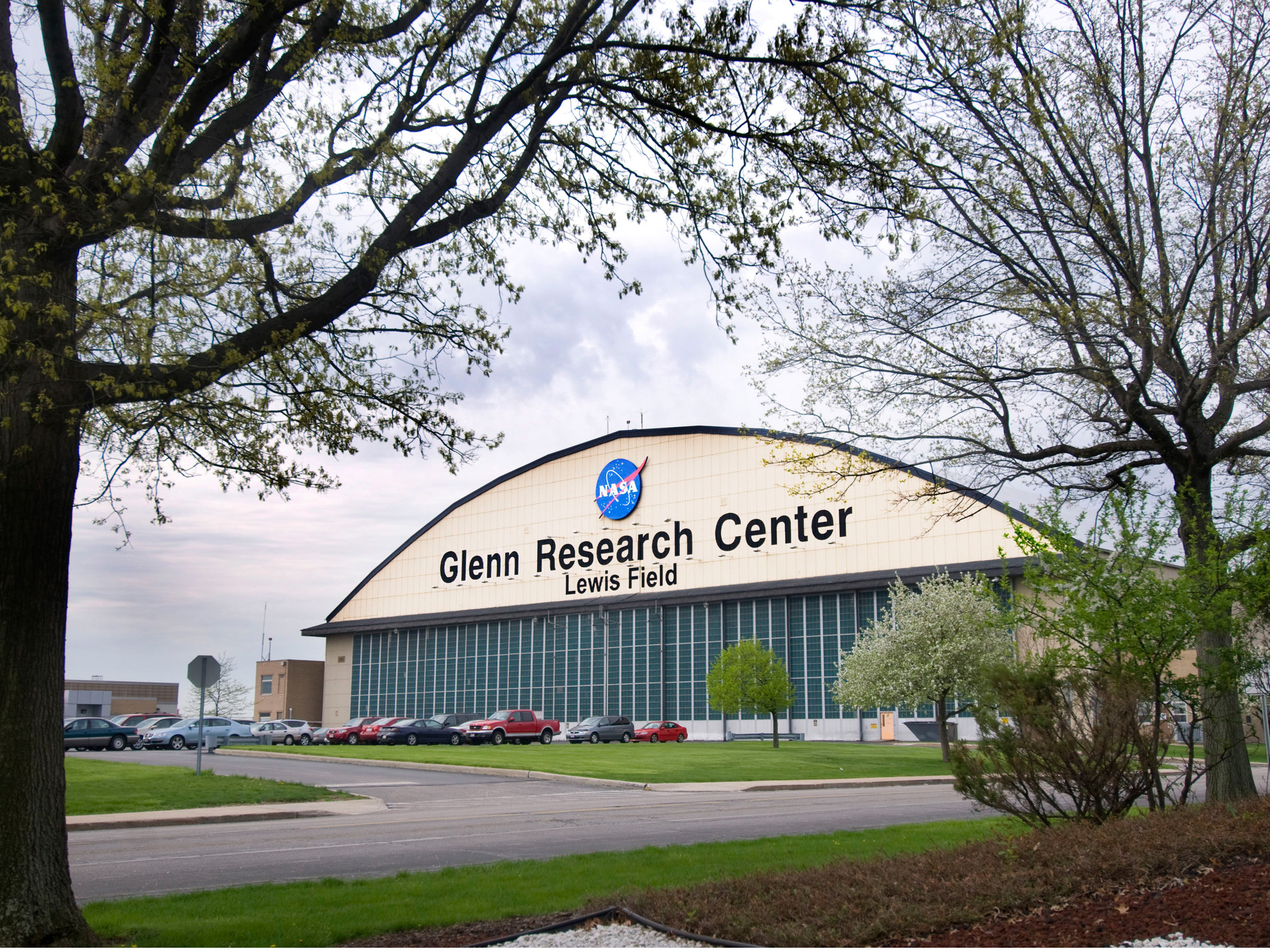
NASA's Glenn Research Center in Cleveland was originally called the Aircraft Engine Research Laboratory. "Glenn excels in researching and developing innovative technologies for both aeronautics and space flight," according to NASA's website. "A multitude of NASA missions have included elements from Glenn, from the Mercury and Gemini projects to the Space Shuttle Program and the International Space Station."
The center's main campus, Lewis Field, is on 350 acres. Glenn's Plum Brook Station is located 50 miles west, in Sandusky, Ohio, and rests on 6,400 acres. Plum Brook "has large, unique facilities that simulate the environment of space," according to the website.
The center hosts tours of its facilities, which are offered one day each month, from April through October. Most of these tours require preregistration at least 30 days before the tour. Unfortunately, tours at Glenn Research Center are restricted to "U.S. citizens and lawful permanent residents." If you wish to visit a NASA center with family or friends that don't meet these requirements, NASA centers like Kennedy Space Center in Florida are more amenable.
The official visitor center for Glenn is the Great Lakes Science Center in Cleveland. The center hosts an OMNIMAX theater, and a wide range of exhibits and artifacts, including a moon rock brought back by the Apollo 15 mission, the 1973 Skylab 3 Apollo Command Module and real NASA spacesuits. Check the website to find out more about what the center has to offer, including a schedule of special events.
NEXT: Ames Research Center and Visitor Center
Ames Research Center and Visitor Center
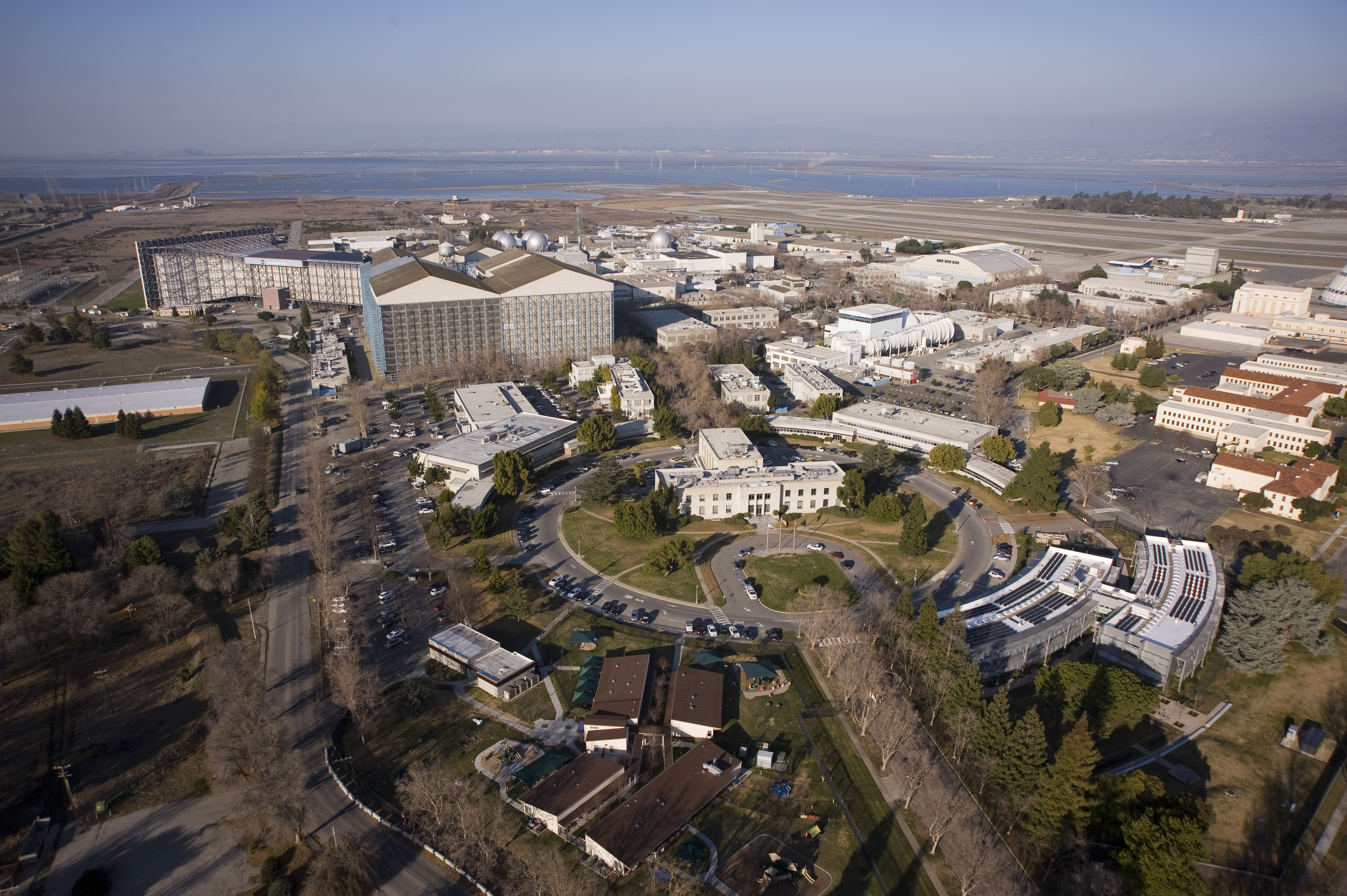
NASA's Ames Research Center, in Moffett Field, California (between Mountain View and Sunnyvale), is involved in a wide range of NASA missions. Ames is the lead center for the Kepler Space Telescope, which hunts for exoplanets, and a partner on the Mars Science Laboratory aboard the Curiosity Rover, and for the International Space Station.
There is a free public visitor center at Ames where guests can learn about "what we're doing at this amazing NASA facility," according to NASA's website. The center includes a Science on a Sphere Visualization System, which projects the surface of a planet onto a spherical surface — a very different view compared with seeing those surfaces in flat 2D. There's also various exhibits relating to some of the missions that Ames is involved with, a real moon rock on display, and a "Living and Working in Space" exhibit.
The Ames Visitor Center is much smaller than some of the other NASA visitor centers, and the average stay at the Ames center only about an hour, according to the center's website. NASA recommends that visitors hungry for more exhibits should visit the Moffett Field Historical Society Museum, which features exhibits and artifacts from local spaceflight and aviation history.
Ames does not offer public tours of its facilities.
The visitor center is open 10 a.m. to 4 p.m. Tuesday through Friday, and noon to 4 pm. Saturday and Sunday. The center is closed Mondays. Be sure to check the website for directions to the visitor center.
NEXT: Armstrong Flight Research Center and Edwards Air Force Base
Armstrong Flight Research Center
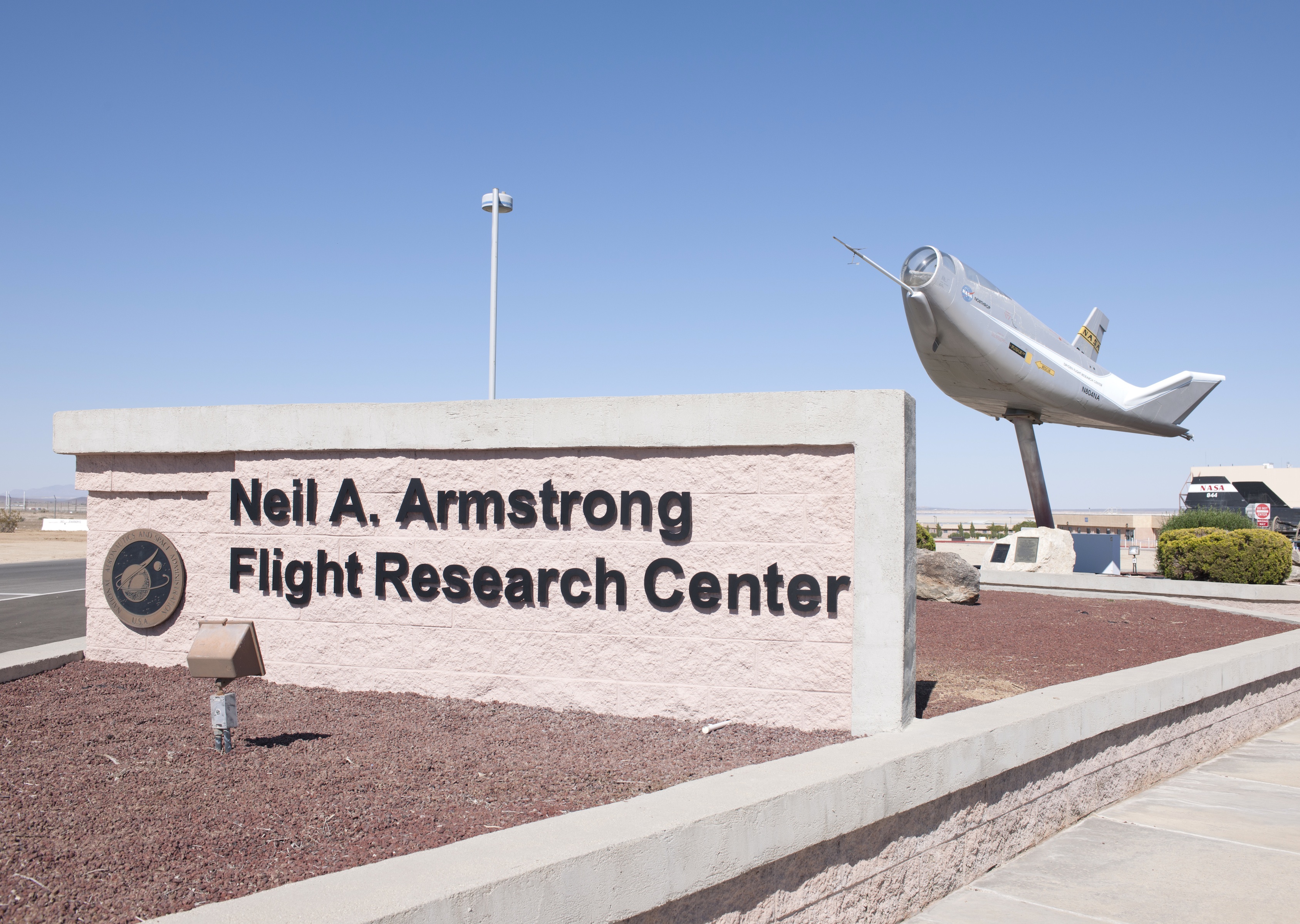
Armstrong Flight Research Center in Edwards, California, is NASA's "primary center for atmospheric flight research and operations," according to the agency website. The facility was involved with testing technologies for the space shuttle, and is currently responsible for space-to-ground communications support for the International Space Station. Armstrong is a testing ground for advanced aeronautics, space and related technologies, including doing testing and integration for the launch-abort system for the Orion crew vehicle, NASA's next human spaceflight vehicle.
Unfortunately, NASA no longer offers tours of Armstrong. However, public tours are available of Edwards Air Force Base, where Armstrong is located. Check the Edwards tour page for more information. Individuals and small groups can sign up for monthly tours of the base, and the minimum age for children is 4 years. More frequent tours can be arranged for groups of at least 15 and no more than about 42 people.
Representatives from Edwards told Space.com that for small groups or individuals, it's best to send an e-mail to s531636@us.af.mil to reserve a tour spot. To make reservations for large groups, calling is best. You can arrange a tour by calling 661-277-3824.
The tour includes a visit to the Air Force Flight Test Museum as well as a windshield tour of the main base, according to Edwards' website.
NEXT: Other NASA Visitor Centers
Join our Space Forums to keep talking space on the latest missions, night sky and more! And if you have a news tip, correction or comment, let us know at: community@space.com.
Get the Space.com Newsletter
Breaking space news, the latest updates on rocket launches, skywatching events and more!

Calla Cofield joined Space.com's crew in October 2014. She enjoys writing about black holes, exploding stars, ripples in space-time, science in comic books, and all the mysteries of the cosmos. Prior to joining Space.com Calla worked as a freelance writer, with her work appearing in APS News, Symmetry magazine, Scientific American, Nature News, Physics World, and others. From 2010 to 2014 she was a producer for The Physics Central Podcast. Previously, Calla worked at the American Museum of Natural History in New York City (hands down the best office building ever) and SLAC National Accelerator Laboratory in California. Calla studied physics at the University of Massachusetts, Amherst and is originally from Sandy, Utah. In 2018, Calla left Space.com to join NASA's Jet Propulsion Laboratory media team where she oversees astronomy, physics, exoplanets and the Cold Atom Lab mission. She has been underground at three of the largest particle accelerators in the world and would really like to know what the heck dark matter is. Contact Calla via: E-Mail – Twitter
